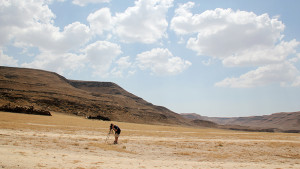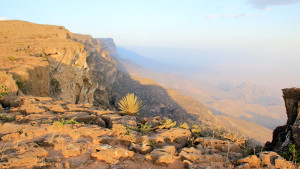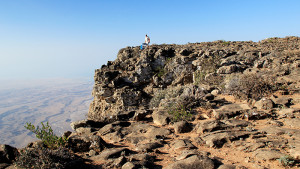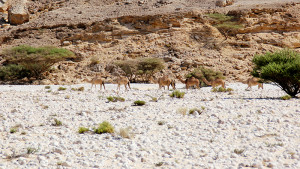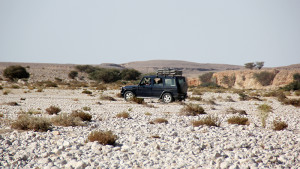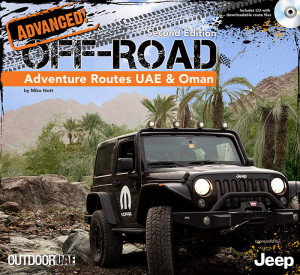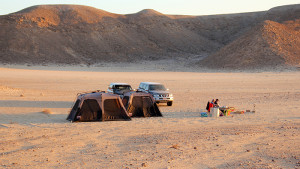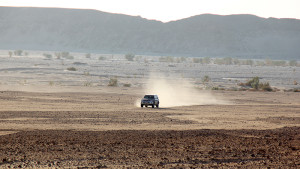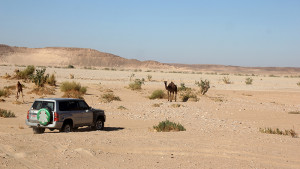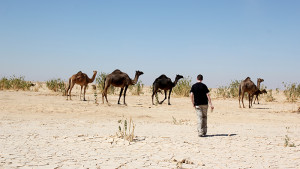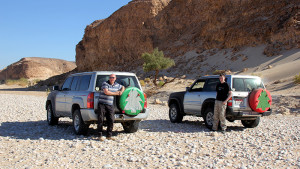Salalah, located in the Dhofar Region of southern Oman, is a must-do trip for many expats and GCC citizens alike, especially during the summer months of the Khareef. A relatively small area of land surrounding Oman’s second city catches the tail end of the Indian monsoon and sees extensive rainfall during the months of July and August; visitors can look forward to temperatures 20-30C less than they would experience over the rest of the Gulf peninsula.
The rain normally starts falling in earnest during early July, and ceases near the end of August, but even if you can’t manage to get there in the next few weeks, there is still much to see. The heavy rain gives way to light rain, drizzle and fog, but it takes a few weeks for the lush green landscape to wither and, with many of the trees in the region being evergreen, it is never truly brown.
My husband and I were fortunate to have an extended Oman trip with Mike Nott back in October 2013 when he scouted for routes for the second edition of his book, Advanced Off-road Routes UAE & Oman. We engaged 4WD just east of Adam and drove off-road for most of the time until we emerged near Salalah some eight days later. We recced four routes in total with Mike and since Neil and I were lucky enough to have another two weeks in Oman, we also drove most of his Empty Quarter route in reverse – our total off-road mileage for the three weeks was just over 2000kms!
We loved every off-road kilometre, but my favourite route was the Dhofar Traverse (route 17 in the book). Starting near Thumrait, where incidentally the Thumrait Palace Restaurant does wonderful cheap curries, we headed east to camp overnight in a sheltered wadi, ready for our fifth day of off-road adventure. The first four days of the trip had gone extremely well and although none of us had felt hurried we were now a good day ahead of schedule which is often not the case!
After a leisurely breakfast, Mike led the convoy through a beautiful wide wadi, its base covered in rocks and stones bleached white, past trees, camels and “smiling” travertine rock faces on some of the hills on either side of the wadi.
Most of the route was quite straight forward and there was plenty of time to gaze around at the incredible Omani geology – it would have been a waste to go fast. The only tricky part of the route was a boulder field, which on Mike’s previous trip there had required some rocks moving, but after the previous winter’s rains there were no overly large obstacles in our way for our journey, and careful spotting and driving saw us through there problem free.
Once through the boulder field we stopped by some very unusual red rock formations; at first we thought they were fossils, albeit giant ones – some were 70cms across – but my geologist friend at PDO in Oman assures me that the “snail shell” formations are the result of molten rock being pushed up to the surface through some fissures in the bedrock.
We continued snaking our way through the wadi until we came across what looked at first like a huge pile of firewood. On closer inspection, we discovered it was a windbreak, presumably for the local farmers’ livestock, made of intertwined branches and old tyres; we found a few more before we hit the tarmac. Despite being seven degrees south of the UAE, the Khareef creates a different climate; in the UAE the Bedouin make temporary shelter out of shade cloth and in Dhofar they create them out of tarpaulins!
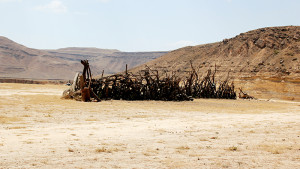
After a week of remote driving, we were amazed to see a mosque in a field as the wadi opened out; with a certain sadness we realised that this heralded the last of our days with limited human contact.
However, our day was not yet over, and we drove on a small road for a few minutes then followed a very rough track for a good few kilometres until we reached what must be one of the best campsites ever. Nicknamed the “end of the world campsite” it is perched on a plateau some 300 metres above the Mirbat plains and enjoys stunning views over the town and out to sea.
This is a relatively short route which starts a long long way from the UAE, so perhaps you might want to tackle some more routes or you might be driving an on-road trip to Salalah and want something other than blacktop under your tyres for the day! A 4×4 is required, and good clearance is desirable for driving through the boulder field. All terrain tyres are also recommended.
Full details of the route, as well as waypoints and a cd with a downloadable route file, are available in Mike’s book. You can find the book in all good book shops in the UAE and other retailers or directly order it online: www.outdooruae.com/guidebook
Wadi Aydam: Part of Route 14
Mike’s routes can often be broken down into stages; for instance, Route 14, the Oman Empty Quarter, can be done in three separate weekends, or you can even choose to take a tiny little chunk out of one of them, which is what we did on our Christmas trip a couple of years back.
Wadi Aydam is amazing; so good we have visited it twice and will most probably return should we find ourselves near Salalah again.
On both journeys we drove Wadi Aydam in reverse from point OE77 through to OE75; there are a few possible routes from Salalah to the start point and we opted for the road south toward Arift, then cut inland on road 45 (which is part gatch) so as to maintain a minimum distance of 50kms from the Yemen border (you can go right up to the Yemen border but we felt safer leaving a good few kms between it and us).
Once at the Wadi we chose an existing track to follow over some small hills. On our first trip we were only about 5kms along the route when we camped for the night, but on our return visit we went a further 10kms to find a slightly elevated area surrounded by small hills, which afforded us some shelter from the light wind. There was an abundance of old dead trees lying down in the wadi so we had a rather fine campfire going in no time.
We wound our way over the 45km route slowly, past piles of shrubs washed down in a previous season’s rain, through gravel fields, up out of the wadi onto some gravel hills and finally through some small white sand dunes.
We did not need to deflate our tyres at all on our first foray through Wadi Aydam, but the second time around some soft sand in the middle caught us out. When you are driving in a wadi with varied terrain, i.e. stones, rocks and sand, then you are never sure what you will find!
This area is well beyond the reach of the Khareef but it has obviously rained at some time in recent years as there is a large area of dried mud with small plants growing between the cracks, as well as some interesting animal prints. There is a surprising amount of wildlife too; we spotted a fox, a hare, a locust and an eagle, plus we encountered many camels on both visits.
You could probably do the drive in 2-3 hours, but I’d recommend allowing about 5 hours for driving plus a night’s camp, to allow time for exploring and for photos, or just for relaxing.
When you come out of the Wadi at the North there is a very small petrol station and a tyre shop at Shisr where you can prepare your car for its return to the blacktop. Don’t forget to visit the Lost City of Ubar when you pass through Shisr itself. This ancient city was lost for centuries until someone managed to locate it using satellite imagery!
If you are Salalah bound over the winter, why not pick up a copy of Advanced Off-Road Routes UAE and Oman to help you escape the beaten path!
Words + Photos by: Marina Bruce

